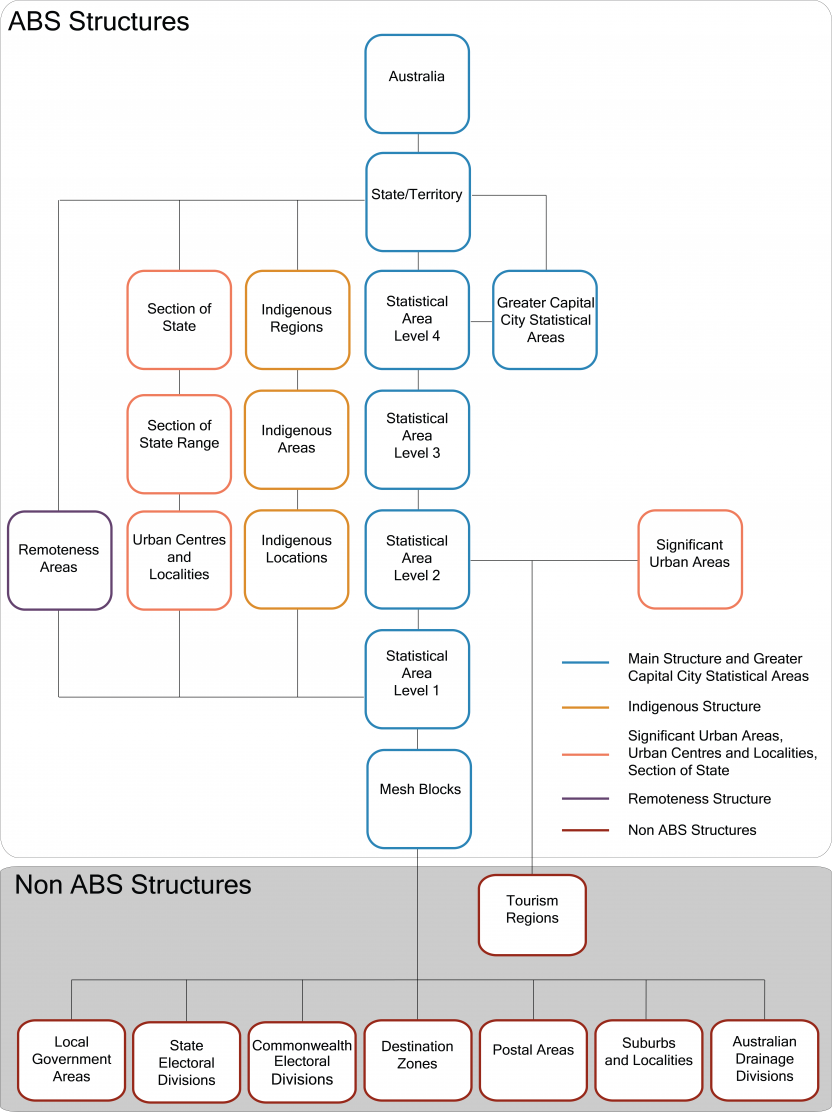Image

Understanding and selecting the appropriate geography for your data search
The Census of Population and Housing is conducted every five years and provides demographic information for geographic areas across the country.
This information is used to:
The Australian Statistical Geography Standard (ASGS) defines all the geographies used by the ABS for release of data. Each geography has its own name, boundaries, and purpose.
To access Census data for an area, you will need to select a geography. There may be different ways to examine the area you are interested in. Selecting the right ASGS geography will depend on the population, characteristics or general trends you’re interested in.
Census data gives us a snapshot of Australia at a specific point in time. This is important to note as geographic boundaries may have since changed.
For QuickStats and Community Profiles, the available geography boundaries are reflective of what they were on Census Night and will remain the same until the next Census. For TableBuilder, Local Government Area (LGA) boundaries will be updated annually; State and Commonwealth Electoral Division boundaries will be updated annually in the years that redistribution occurs.
To assist you with your geography selection, the following map tools are recommended:
The ASGS provides comprehensive information about each geography used by the ABS for the release of data. As well as using the ASGS for further information on geographies, the following pages are recommended for reference:
The ASGS is divided into two parts:
The ASGS diagram provides a visual representation of the hierarchy and relationships between each geography.
Note: A small number of customised geographies are available for Census data to support user needs. Details of these can be found at the end of the Census geography glossary.